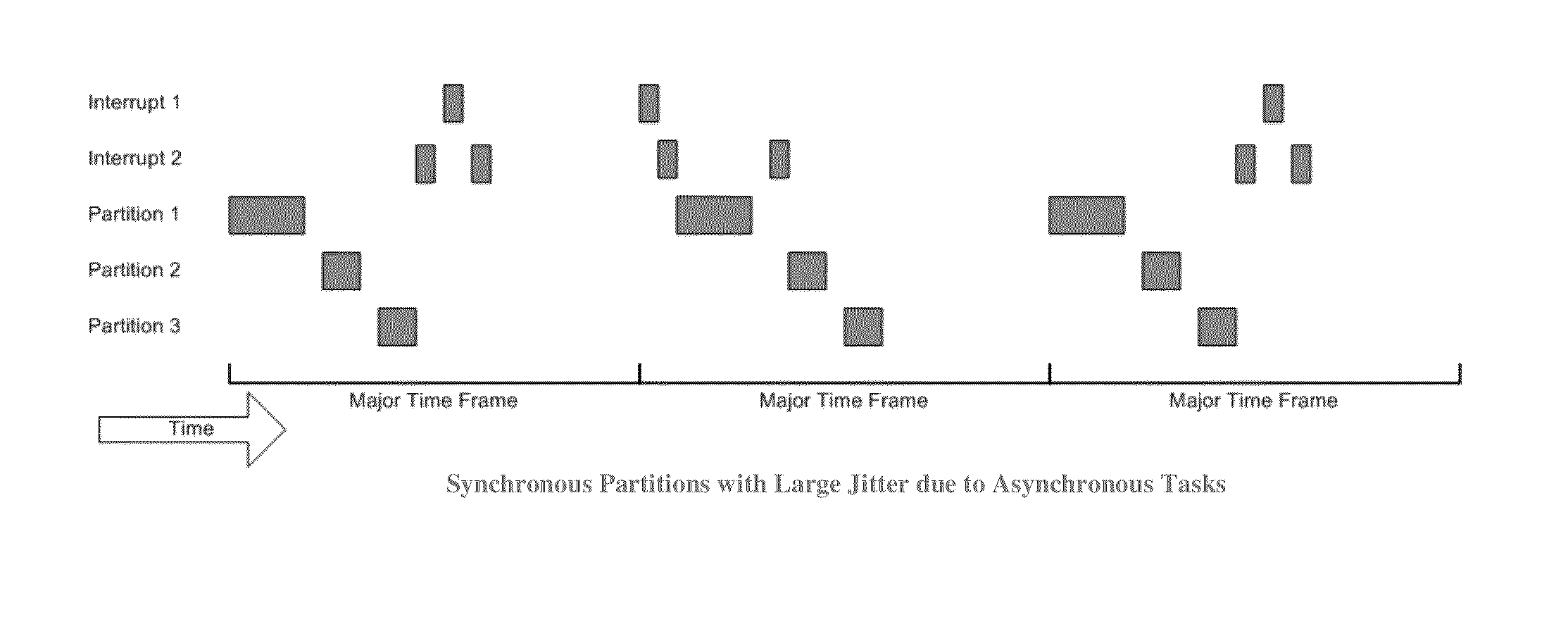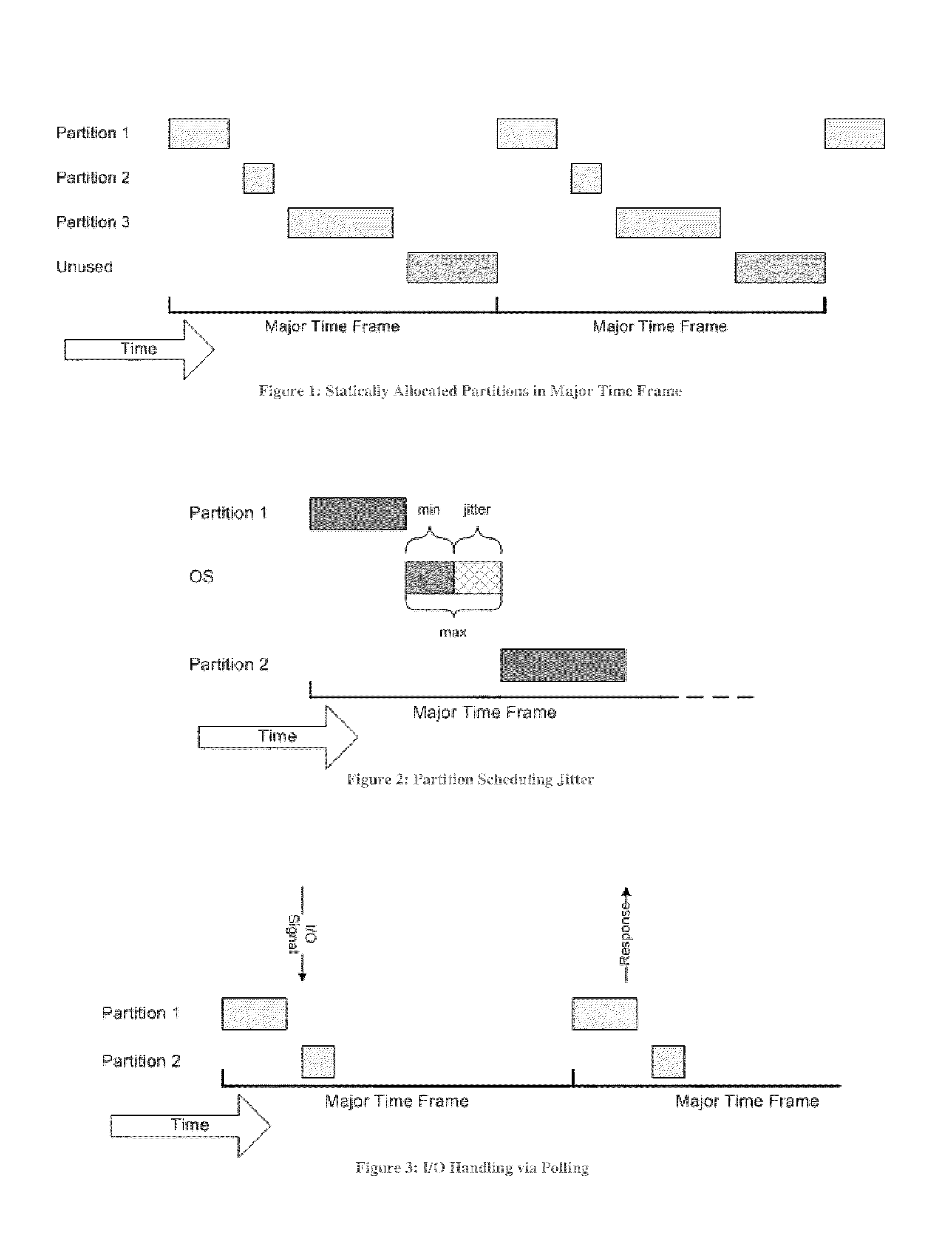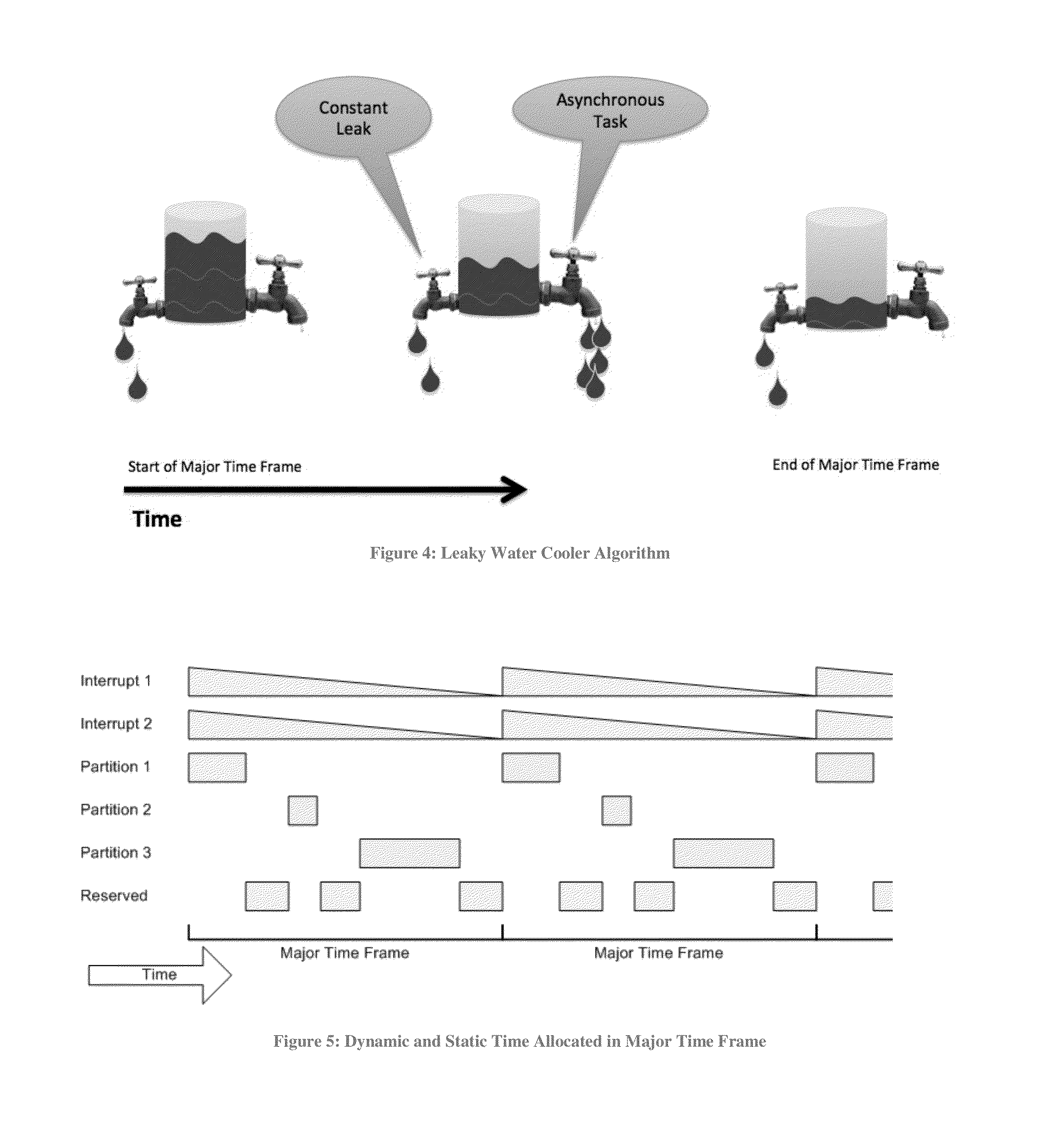System and method for deterministic time partitioning of asynchronous tasks in a computing environment
a computing environment and asynchronous task technology, applied in computing, instruments, electric digital data processing, etc., can solve the problems of affecting the amount of time available for asynchronous tasks, the depletion of reserved time, etc., and achieve the effect of dynamically reducing the allocation of asynchronous tasks and improving the handling of asynchronous tasks
- Summary
- Abstract
- Description
- Claims
- Application Information
AI Technical Summary
Benefits of technology
Problems solved by technology
Method used
Image
Examples
Embodiment Construction
[0039]I. Overview.
[0040]The present invention provides systems and methods for scheduling and controlling asynchronous tasks to provide deterministic behavior in time-partitioned operating systems running a plurality of synchronous and asynchronous tasks. With the present invention, determinism can be maintained even with asynchronous tasks, such as interrupts. In one embodiment, the systems and methods, first, implement a credit-based time accounting system that includes accounting for time in asynchronous tasks each major time frame. Second, the time allocated to asynchronous tasks is dynamically decreased over the duration of the major time frame, so that the presence or absence of one task does not interfere with another task. The present invention may implement any of a variety of alternative methods for scheduling asynchronous methods. These various methods may be selected based on the desired priority / hierarchy between synchronous and asynchronous tasks. In one embodiment, as...
PUM
 Login to View More
Login to View More Abstract
Description
Claims
Application Information
 Login to View More
Login to View More - R&D
- Intellectual Property
- Life Sciences
- Materials
- Tech Scout
- Unparalleled Data Quality
- Higher Quality Content
- 60% Fewer Hallucinations
Browse by: Latest US Patents, China's latest patents, Technical Efficacy Thesaurus, Application Domain, Technology Topic, Popular Technical Reports.
© 2025 PatSnap. All rights reserved.Legal|Privacy policy|Modern Slavery Act Transparency Statement|Sitemap|About US| Contact US: help@patsnap.com



